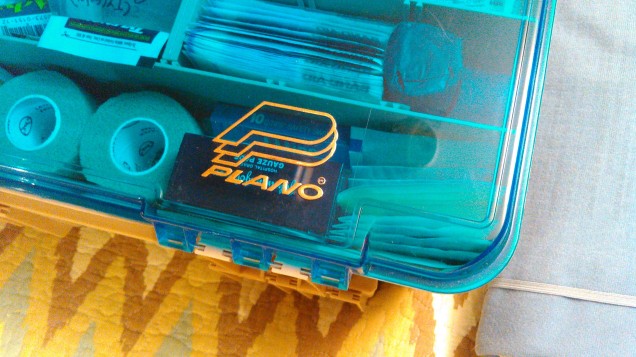Last week I shared a little of my background in getting “boo boos,” as my grandkids call them. This week, I want to talk about being prepared for getting those boo boos, some of which can be more like “uh ohs” and “oh nos.” Here we go:
Boo Boo Kits
First, I want to make one more very important point. I took a one week Emergency Medical course taught by a former Paramedic who used to do that type of work for a living. As the course progressed, I came to the realization that most first-aid kits sold are what I now call “Boo Boo kits,” designed to handle minor cuts, etc.
The thing I became concerned about is that a person can literally bleed to death in a matter of minutes from a serious injury.
The thing I became concerned about is that person can literally bleed to death in a matter of minutes from a serious injury. So I want to make sure I have the necessary items in both of my kits to save myself, loved one or anybody who needs it for that matter.
Being able to stop or dramatically slow major bleeding is absolutely essential. Anybody can survive a minor cut with some duct tape, but surviving a major wound with excessive bleeding is what we need to be concerned about. Major bleeding can claim a life in just 10 minutes unless you take quick action and have proper supplies.
You need to learn more about this and have your own kit. Here’s what’s in mine:
- A tourniquet (they sell quick applying tourniquets, just Google it)
- Two major trauma-wound dressings designed to stop heavy bleeding (I have one type, but want to research brands and styles more before I recommend any)
- Educate yourself and family on how to handle major bleeding.
Ideas
- The first step in building a great first-aid kit for keeping at home is organization and a way to keep your supplies clean, dry, portable and organized. The best container I could find at the time of my serious build was a fishing tackle box bought at a local chain store. I have had supplies for years, but wanted a way to carry the kit to the accident if needed. Or to bring with me if I bugged out my vehicle in the future (what a resource it would be).

- Gather all of the first-aid supplies from your house and install them in your kit.
- Make a list of needed items to buy as soon possible.

- Store the kit in a nice dry spot, a place where everyone in the family knows its location. Notice I have a First-Aid book in my kit? Even though I stay current on first-aid procedures, someone else may be using this kit on ME someday as I lay there unconscious, and they may not be as knowledgeable as I am. I wanted to help them so that they can help me or someone else.

Knowledge and Future Expansion
In addition to my First-Aid kit is knowledge. I own numerous books on the topics of First-Aid (I keep them in a briefcase), Extended Care and other Medical topics topics such as War Surgery.
My goal in the future is to expand my kit (which may include another tackle box) as I want to buy a stethoscope, blood pressure cuff, and other Paramedic equipment. And now there are various devices you can hook up to your smart phone for diagnostic purposes such as an EKG.
Bottom Line:
I want to encourage you all to assemble – not a “boo boo kit,” but a real, true first aid kit, and I want you to do it this weekend. No more procrastinating, no more excuses. This thing could SAVE YOUR LIFE one day. And if you need it but don’t have it….
Well, I want you to be ready to take care of you and your family’s needs at a moment’s notice, when every second counts.
Your friend in self-sufficiency,
Andy Savage
“The Mountain Man”

This blog post is an account of the author. Situations differ and are contingent on the abilities of each individual person involved, as well as unforeseen circumstances. The author and/or his associates are not liable for any injuries, loss, or damages incurred due to the use of such information. Such content is for general, informational and entertainment purposes only.
Andy Savage is not a medical professional. Any information he has shared entails what he has personally learned and experienced. He is not a trained doctor, nor is he prescribing anything to anybody.
